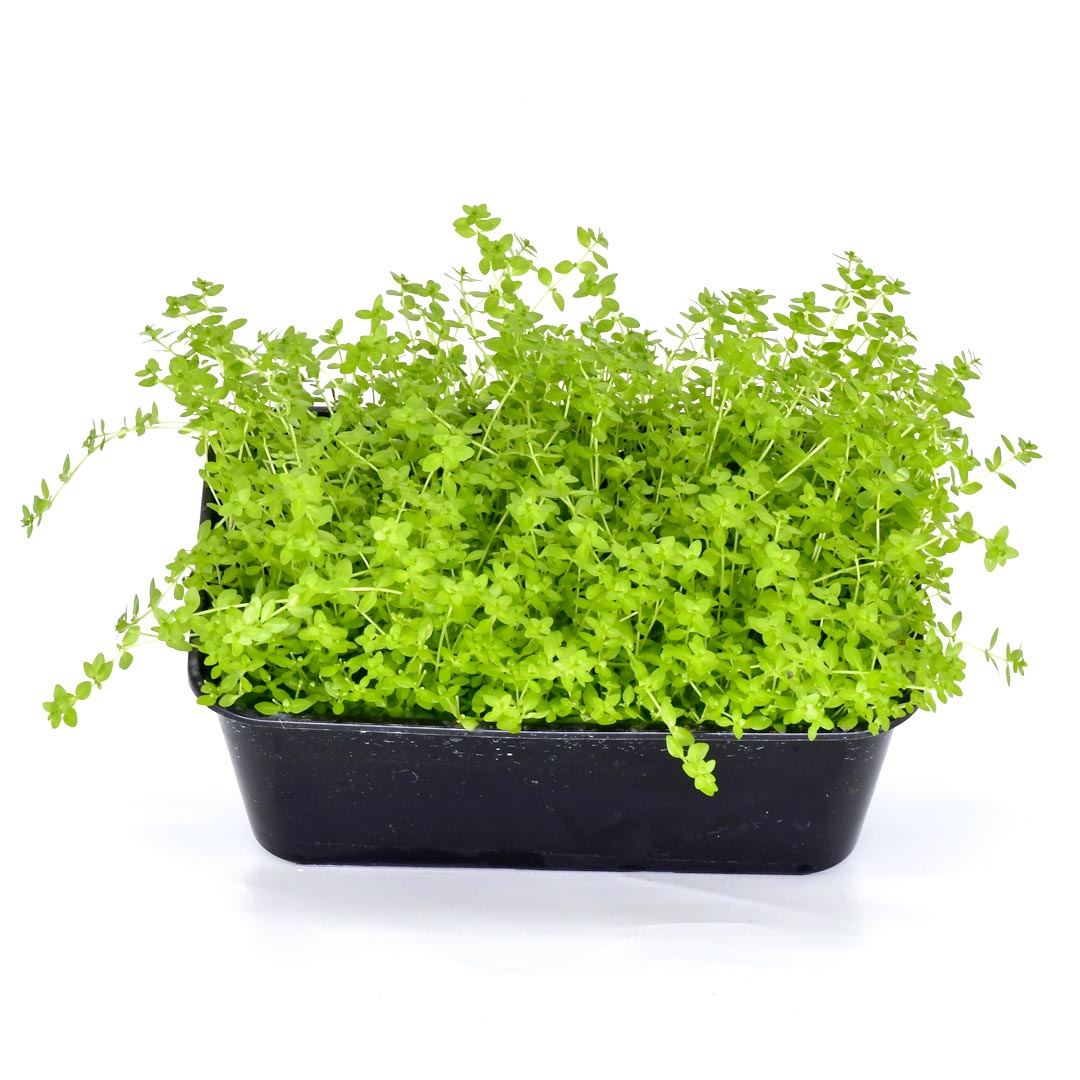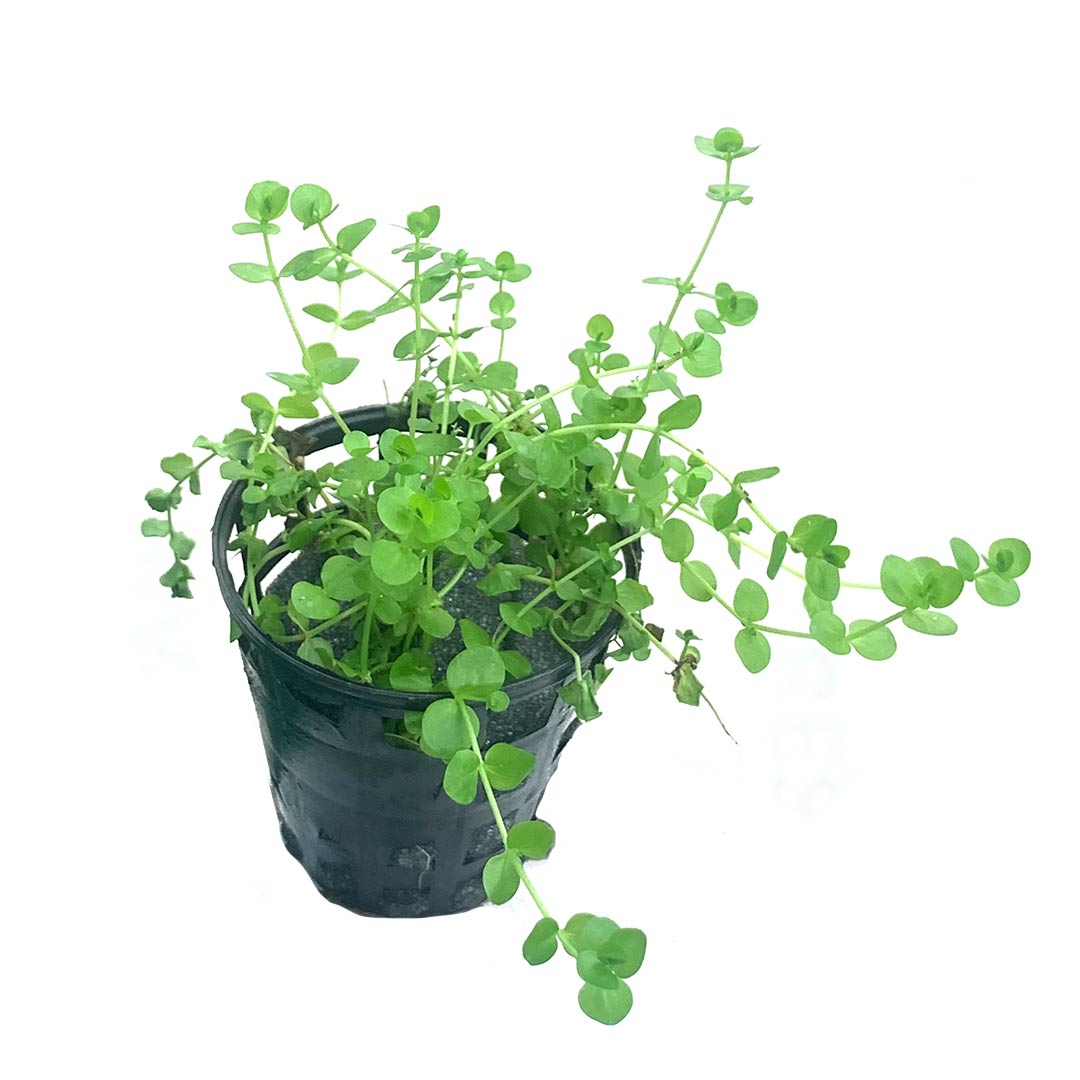Micranthemum Callitrichoides ‘Cuba’ (6″ x 4″ MAT ) is one of the world’s tiniest aquarium plants, creeping over the bottom with millimetre-sized, round leaves. Hemianthus callitrichoides is a popular foreground plant in small aquariums. It is not a difficult plant to grow, but it does require favourable conditions such as sufficient light, added CO2, water circulation, and fertiliser to thrive. If these conditions are difficult to achieve, Micranthemum ‘Monte-Carlo’ is a less demanding alternative. Small pearls or bubbles of oxygen are frequently produced on top of the plants, giving the carpet a very lively appearance.
It spreads quickly and covers the ground like a carpet if planted in small clumps a few centimetres apart. Trim the carpet on a regular basis, or the lower parts will not receive enough light, resulting in root death. Found on the island of Cuba, west of Havana.
Micranthemum Callitrichoides ‘Cuba’ (6″ x 4″ MAT ) (commonly known as HC Cuba) is a popular and versatile Aquarium Plant that creates a lush green carpet effect in the aquarium. It can be used to make a dense base that contrasts with other focal point Aquarium Plants.
However, the HC Cuba Aquatic Plant is frequently referred to as a difficult plant to cultivate, with many aquascapers having difficulty with it.
Here we cover everything there is to know about the HC Cuba plant, describing which setups work best, and finally answering the all-important question of how to successfully cultivate it.
Because of its small size (just 3-5cm tall and 10cm across), the Micranthemum Callitrichoides ‘Cuba’ (6″ x 4″ MAT ) is ideal for nano aquariums or any type of layout where you need to achieve a sense of scale. When used in an aquarium to house small fish and/or shrimp, it can produce some particularly effective designs and produces a steady pearling as it photosynthesizes. The HC Cuba is frequently regarded as a difficult aquarium plant to cultivate; however, careful attention to light and CO2 levels, as well as the use of high-quality fertilisers, can result in the growth of a wonderful, lush carpet for your aquarium that grows moderately quickly. While easily manageable, you must also maintain the levels of light, CO2, and fertilisers in order to see your HC Cuba truly flourish. There are two ways to plant the HC Cuba plant. The first (and simplest) option is to remove the plants and Rockwool from their pots, cut them into 1cm/0.4″ squares, and plant them (including the Rockwool) into the Aquarium’s substrate. After a week or so, you should notice the HC Cuba carpeting the bed. There is a less expensive, but more time-consuming method for those who fall into the more frugal category of aquascapers. Simply pick the individual stems with tweezers and place them in the substrate with relatively large spaces between them. Fill the tank gradually once the planting is finished (filling the tank too fast can result in the plant floating).
Aqua Soil Powder may be the best substrate because it has a much smaller grain size than other forms. This simplifies the planting process and allows the HC Cuba roots to take root more quickly. However, where HC Cuba is used to create scale, Aqua Soil Powder complements the effect of the plant by creating a carpet that contrasts against the size of your plants or other, larger elements in your aquarium. This is most effective when used in the foreground.
To keep the HC Cuba and prevent the plant from becoming too long, you should trim it frequently with wave scissors. If you want to achieve a particularly dense effect, trimming it more frequently will allow you to do so in less time. Dense growth results in a healthier-looking carpet that appears brighter than if the HC Cuba was thinner.
The Hemianthus Callitrichoides Aquarium plant has sparked unprecedented interest and use in aquarium layouts, which is especially impressive given the plant’s recent discovery.
While this plant has earned the moniker “Aquascaper’s Challenge,” following the instructions in this article should result in fantastic results with one of the most versatile plants found in the Aquascaping world.
We’d love to see your successes in creating a beautiful underwater garden from the HC Cuba plant, so please send over some photos to show off your work; similarly, if you’ve had less success, why not send your photos anyway?
Don’t be discouraged because the HC Cuba Plant is a notoriously particular plant that requires a balanced combination of elements. In any case, we enjoy assisting our readers in resolving Aquascaping problems!
Aquascaping Love was founded with the intention of blogging about, documenting, and educating people about the art of aquascaping. This website was created to showcase some of the most beautiful underwater gardens from around the world, as well as to provide helpful hints, tips, and tutorials for others to recreate some of the most inspiring underwater gardens in existence.
Hemianthus callitrichoides grows how fast?
Hemianthus callitrichoides forms a dense, bright green plant carpet in 3 to 4 weeks when planted in small patches a few centimetres apart in the well-lit foreground of an aquarium.
Can Hemianthus callitrichoides cuba be grown without CO2?
The HC Cuba plant is difficult to grow without CO2, and should only be attempted if you have spare time and plants to waste, but this method greatly increases your chances. Best species for growing without CO2: Easy rating: Brazilian lilaeopsis
Is fertiliser required for HC Cuba?
Hemianthus callitrichoides is a popular foreground plant in small aquariums. It is not a difficult plant to grow, but it does require favourable conditions such as sufficient light, added CO2, water circulation, and fertiliser to thrive.










